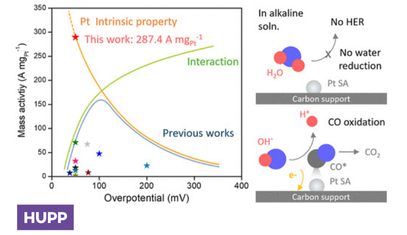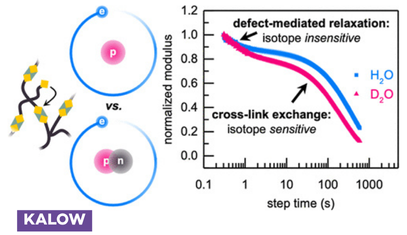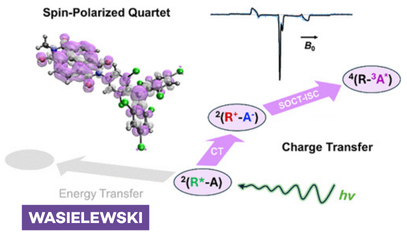Recent Research
Unresolved Questions in Nanoscience and Nanotechnology - Nano Focus
 Significant advances in science and engineering often emerge at the intersections of disciplines. Nanoscience and nanotechnology unite chemistry, physics, biology, medicine, materials science, and engineering, fostering novel approaches and enabling transformative materials, tools, and technologies. In this Nano Focus, poses and explores 33 unresolved questions whose answers could profoundly impact fields such as energy, electronics, the environment, optics, and medicine. These questions highlight the need for deeper foundational understanding, improved tools and techniques, and innovative applications, each with broad societal relevance. Together, they represent a global call-to-action for the scientific community.
Significant advances in science and engineering often emerge at the intersections of disciplines. Nanoscience and nanotechnology unite chemistry, physics, biology, medicine, materials science, and engineering, fostering novel approaches and enabling transformative materials, tools, and technologies. In this Nano Focus, poses and explores 33 unresolved questions whose answers could profoundly impact fields such as energy, electronics, the environment, optics, and medicine. These questions highlight the need for deeper foundational understanding, improved tools and techniques, and innovative applications, each with broad societal relevance. Together, they represent a global call-to-action for the scientific community.
Adjusting the Criteria for Hydrogen Evolution by Single-Atom Catalysts
 Downsizing noble metal catalysts is essential for improving atomic efficiency in sustainable energy applications. The Hupp Group investigates the interfacial mechanism of the hydrogen evolution reaction (HER) using structurally well-defined platinum single-atom electrocatalysts. Unlike chemically reduced single atoms, electrochemically deposited Pt sites do not rely on strong support interactions, allowing these isolated atoms to approach the theoretical maximum hydrogen production efficiency. This work clarifies previous ambiguities in single-atom electrocatalysis and provides a new strategy for designing highly efficient HER electrocatalysts.
Downsizing noble metal catalysts is essential for improving atomic efficiency in sustainable energy applications. The Hupp Group investigates the interfacial mechanism of the hydrogen evolution reaction (HER) using structurally well-defined platinum single-atom electrocatalysts. Unlike chemically reduced single atoms, electrochemically deposited Pt sites do not rely on strong support interactions, allowing these isolated atoms to approach the theoretical maximum hydrogen production efficiency. This work clarifies previous ambiguities in single-atom electrocatalysis and provides a new strategy for designing highly efficient HER electrocatalysts.
Rheological Isotope Effects for Molecular Insight in Covalent Adaptable Networks
 Understanding how small-molecule reactivity translates to bulk properties remains a fundamental challenge in polymer science. The Kalow Group introduces rheological isotope effects (RIEs) as a tool to probe dynamic covalent bond exchange in covalent adaptable networks (CANs). By swelling dithioalkylidene-based CANs in H₂O or D₂O, they accelerate exchange and stress relaxation, revealing how cross-linker structure, density, and network topology influence viscoelastic behavior. Monte Carlo simulations suggest that topological defects, including bridging chains, reduce effective network size and alter stress relaxation. RIEs provide a new framework for studying exchange mechanisms in bulk networks and understanding the impact of defects on polymer viscoelasticity. Macromolecules, 58, 1 (2025)
Understanding how small-molecule reactivity translates to bulk properties remains a fundamental challenge in polymer science. The Kalow Group introduces rheological isotope effects (RIEs) as a tool to probe dynamic covalent bond exchange in covalent adaptable networks (CANs). By swelling dithioalkylidene-based CANs in H₂O or D₂O, they accelerate exchange and stress relaxation, revealing how cross-linker structure, density, and network topology influence viscoelastic behavior. Monte Carlo simulations suggest that topological defects, including bridging chains, reduce effective network size and alter stress relaxation. RIEs provide a new framework for studying exchange mechanisms in bulk networks and understanding the impact of defects on polymer viscoelasticity. Macromolecules, 58, 1 (2025)

 Molecular optical-spin interfaces are emerging as promising alternatives to solid-state defects for quantum information applications. The Wasielewski Group reports a new organic molecular color center consisting of two luminescent tris(2,4,6-trichlorophenyl)methyl (TTM) radicals connected via a toluene bridge. Steric hindrance between the methyl group and TTM phenyls enhances spin-selective intersystem crossing and reduces electronic coupling, yielding higher optically detected magnetic resonance contrast and longer excited-state lifetimes. Coherent microwave manipulation of spin-polarized populations and coherences is demonstrated via optical detection of Rabi nutations and Hahn echo measurements at 85 K. This study advances the use of organic molecules as quantum sensors under conditions previously challenging for molecular color centers.
Molecular optical-spin interfaces are emerging as promising alternatives to solid-state defects for quantum information applications. The Wasielewski Group reports a new organic molecular color center consisting of two luminescent tris(2,4,6-trichlorophenyl)methyl (TTM) radicals connected via a toluene bridge. Steric hindrance between the methyl group and TTM phenyls enhances spin-selective intersystem crossing and reduces electronic coupling, yielding higher optically detected magnetic resonance contrast and longer excited-state lifetimes. Coherent microwave manipulation of spin-polarized populations and coherences is demonstrated via optical detection of Rabi nutations and Hahn echo measurements at 85 K. This study advances the use of organic molecules as quantum sensors under conditions previously challenging for molecular color centers.